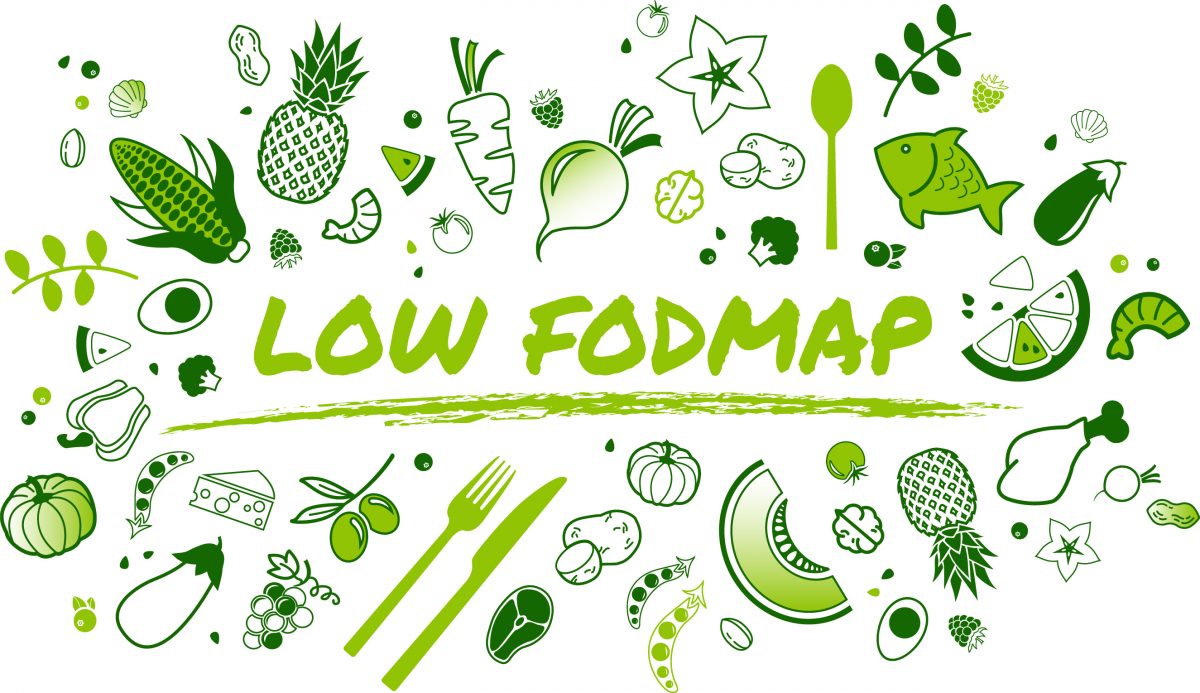The Modified FODMAP Diet
- Low FODMAP diet
You have just finished the low FODMAP reintroduction phase and are now wondering what to do.
It is time for the modified FODMAP diet!
This personalised low FODMAP diet is the long-term element of this diet. This is when you eat relatively normal and exclude only your known triggers.
In this article, I will explain how you can do the personalised low FODMAP diet with a step by step guide.

The Stages of the low FODMAP Diet
You may know that there are 3 stages to the low FODMAP diet. It is important to complete all 3 in a way which is systematic so that you get clarity on your symptoms.
- Elimination – where you reduce the FODMAP content of your diet
- Reintroduction phase – where you find out what you trigger foods are and how much you can tolerate.
- Modified FODMAP stage – you avoid only your know trigger foods.
What is the Modified FODMAP Diet?
This personalisation stage is when you follow a ‘modified FODMAP diet’.
AKA the ‘maintenance phase.’
This means that you only avoid the foods which were proven to cause symptoms during your reintroduction phase.
You will need to personalise this in terms of both the types and quantities of foods which you can tolerate.
This is the most exciting part of the process! Personalisation means that you can follow a mostly ‘normal’ diet whilst getting the symptom relief you need.
Having a close to ‘normal’ diet will allow you to have a far more diverse diet that is enjoyable (1).
Never underestimate the negative psychological impact of being on a long-term restrictive diet!
Step 1 of the Modified FODMAP Diet
In the reintroduction phase, you would have concentrated on foods which contain just 1 FODMAP. Now, it is time to trial foods which contain multiple FODMAPs.
Here are some examples;
- Asparagus: contains fructose and fructan
- Beetroot: contains GOS and fructan
- Butternut: contains mannitol and GOS
- Apples: contain sorbitol and fructose
- Apricot: contains sorbitol and fructan
Step 2 of the Modified FODMAP Diet
Now you need to get an idea of how you deal with the FODMAP load.
So trial 2 foods together which contain FODMAPs.
Great combinations for this are;
- Garlic bread
- Apple with cashew nut butter
- Yoghurt and honey
Step 3 of The Modified FODMAP Diet
Now you need to find out how many FODMAPs you can manage per day.
Remember that FODMAPs do have a stacking affect so you may find that eating your ‘safe’ portion frequently through the day becomes an issue.
Say you can tolerate 1 slice of bread. You may not be able to manage 1 slice of bread at all 3 meals that day.
This is because the FODMAPs all get digested in your large bowel, creating gas, bloating and loose stools. 1 slice of bread may not cause any symptoms but the accumulative affect of this x 3 may well do.
Play around with different amounts of your ‘safe’ FODMAP portions in 1 day. Just be sure to keep 1 portion per meal.
Will I Get Symptoms on The Personalised low FODMAP Phase?
It can be quite daunting to regularly eat high FODMAP foods which you considered to be potential triggers.
Sadly, there is hardly any research looking at this stage of the diet. And, the research we do have is not great quality.
This research suggests 57 – 72% of people experience adequate symptom relief on the modified low FODMAP stage (2, 3).
How Long Does the Personalisation Stage of the Low FODMAP Diet Take?
We have no research on this at all, so it is hard to say.
From working with clients, this stage can vary depending on how often you get symptoms and how quickly you move through each challenge.
To speed things up, plan 1-2 challenges each week.
Monash App
The Monash low FODMAP app will help you with your modified FODMAP diet.
It allows you to select foods to include and exclude to start to build up a personalised FODMAP profile.
Below, is a video of how to do this.
Can Your Tolerance of FODMAPs Change?
Yes!
This is one of the biggest take home messages I tell my clients. Remember that your gut is forever evolving.
On my Take Control IBS Membership program, we look at reducing gut sensitivity. This is done through a combination of relaxation techniques, sleep and exercise.
Although members typically only need 2-3 months to complete the program, they continue these exercises for life. Meaning that they may be able to tolerate more foods later.
It is always important to re-check foods every 6 months.
Equally, if you are going through a stressful period on have been on antibiotics, you can expect to be more sensitive to FODMAPs.
Click here to read my post on IBS and stress.
Summary
The modified FODMAP diet is the last stage of the low FODMAP diet process.
Don’t worry if you feel confused, just take it step by step.
And do not forget that your tolerance for foods may increase at a later stage.